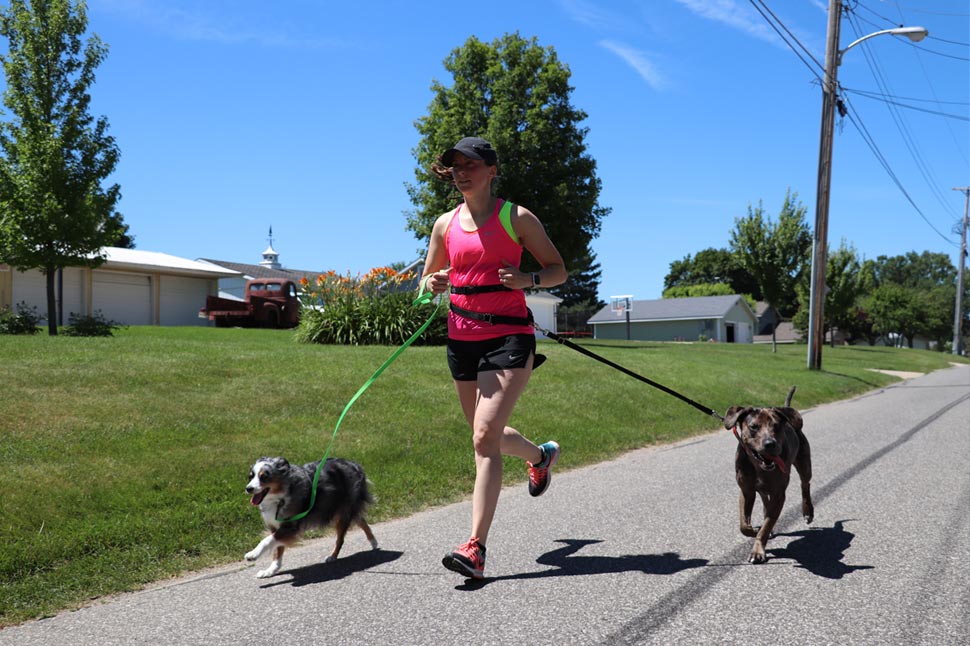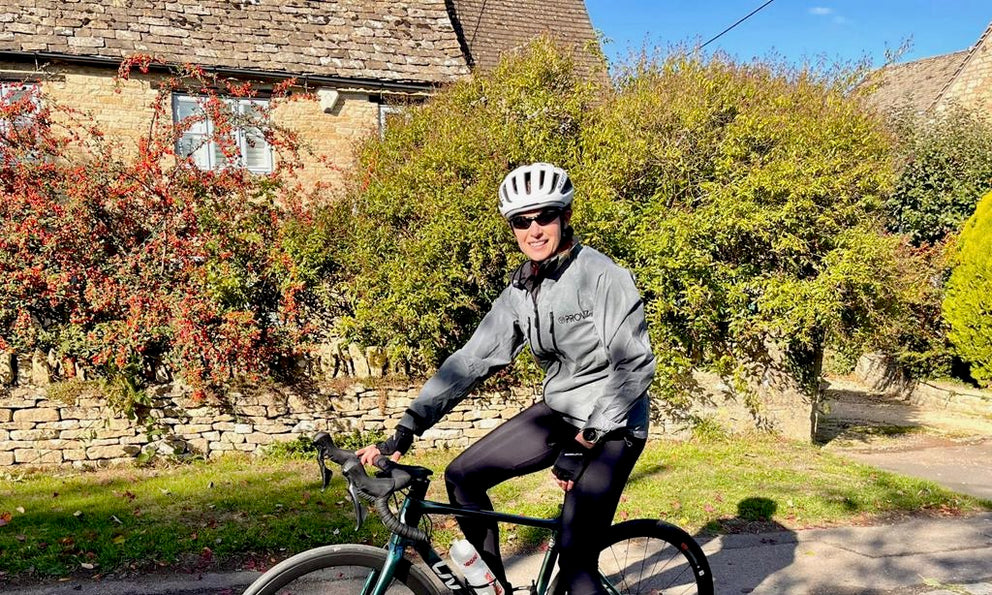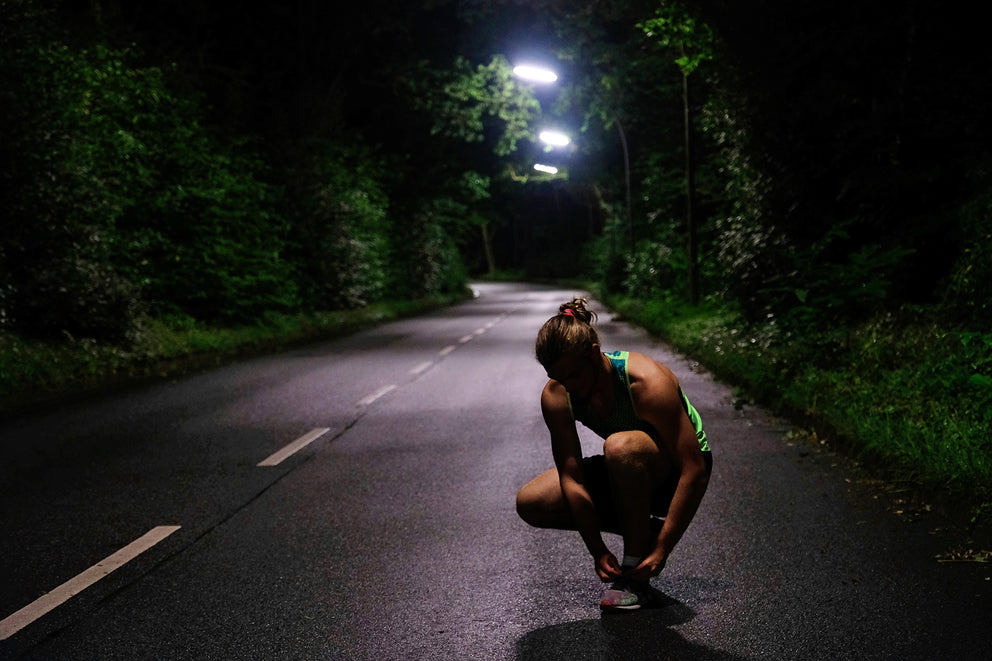This week celebrates National Dog Day in the US on the 26th August, a day devoted to the humble canines that bring us endless amounts of love and loyalty and the working dogs that act as lifelines for others. But what about their bearing on our health and fitness? Studies show that you’re more likely to keep up an exercise regime and stay motivated with a partner. But having a training partner that’s forever enthusiastic and willing to get up with you at the crack of dawn can be hard to find. Likewise, if it’s winter and you’re contending with low temperatures, snow and cold weather, that enthusiasm is likely to wane. Enter man’s best friend: the perfect partner that never complains, has boundless enthusiasm, mountains of excess energy to burn and who needs the exercise as much as you do.

If pavement pounding isn’t your thing, running with your canine companion can make the whole experience seem less like a chore and more like an enjoyable activity. It can also be a comfort, particularly if you’re running in a secluded area at night. But, not all dogs are built for running; for example brachycephalic breeds with obstructed airways, like pugs, bulldogs and Shih Tzus are better off taking a long amble. So there are definitely some things to keep in mind if you decide it’s something you want to try. So, where do you start? We talked to a couple of runners and their dogs for some advice.

Seasoned Dog Joggers: Allison and Patch, Denver, Gera & Rumi
Allison has spent all her adult life running with her four-legged friends. So much so, that when she decided to run the London Marathon, while on a work assignment in London, she knew she couldn’t train alone.
“I got Patch when he was about two-years old. He’s a miniature Australian Shepherd, but was too shy to herd the goats on his owner’s farm. He naturally ran next to my ankles from the start. His breed are called Velcro dogs because they just want to be where their owner is. He’s about 10 years old now, so I mainly run with Denver now, who we adopted in January 2016. We think he’s a Labrador Catahoula cross, another working dog.
“I spent a lot of time teaching Denver how to run with me. The philosophy I bring to the dogs is that you make the right thing easy to do and the wrong thing hard. It’s the same in the horse world. A horse weighs 1,000 pounds so you can’t make it do anything. Denver loves chasing squirrels, so the wrong thing would be to run off and pull me over. To make it hard, I’m going to try and stand in between him and the squirrel; easy is getting praise and treats. We’ve spent several months practising and now he’s really only swayed if we’re passing a playful puppy. He has trouble passing up that opportunity.

“When I came to London for work, I signed up for the London Marathon, but I didn’t understand how to run without a dog. A friend of mine told me about www.borrowmydoggy.com, which is how I met Gera and Rumi. I made it clear on my profile that I was looking for dogs who I could run with.
“Gera knew straight away how to run with me. We ran once a week and got up to about eight miles. I became friends with his owner and get regular updates now that I’m back in the US. The cool thing is she and Gera now go on runs together. I only really ran with Rumi once, but we went 13.1 miles. His owner sent me a message afterwards saying he’d never seen him sleep like that!”
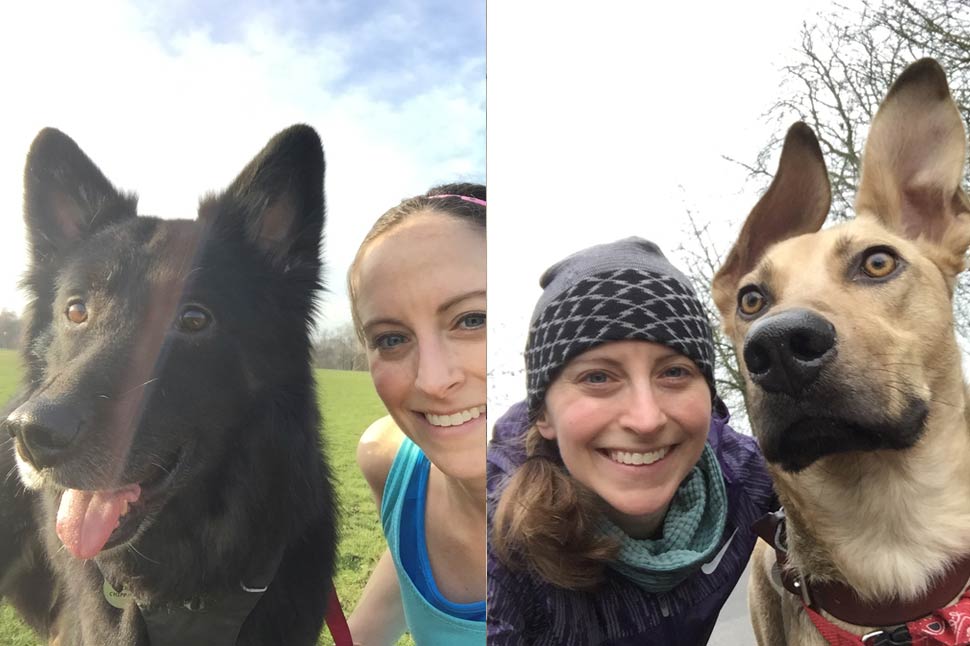 Allison with Gera (left) and Rumi (right)
Allison with Gera (left) and Rumi (right)
Allison’s tips for running with your dog
- Build your distance – when Patch and I first started we’d run for a mile and the rest would be walking. Better yet, do a loop. You want to make everything as positive as possible for your dog, otherwise they won’t want to run with you. The main thing is not to take them on a three-mile run if they’ve never done it before. You need to build it up and condition them to run at your pace, not theirs.
- Listen to your dog – if you’re having fun they’re going to want to continue, so it’s up to you to pay attention. I’ll often turn to my dog and kind of ask ‘you okay kiddo?’ You can tell when your dog is super fatigued or if they just want to keep going. Be guided by them.
- Watch for excessive panting – I live in Houston so dehydration is an issue for my dogs. If you’re running in heat, watch for the panting and make sure that you know where the water bowls and shade are. Denver is really good and will drink from any bowl. Patch was more picky so I had to plan for that.
- Consider a harness – Denver is a really energetic dog, so I use a harness that hooks on at the front. This means it feels funny if he pulls forward, without hurting him. If your dog is not good at ‘heeling’ and you clip it to the back, you’re just giving them more leverage to pull you along.
- Be prepared – I have a belt that I can carry my phone in, for tracking and for safety. I feel safe running with Denver, but it’s good to be prepared. And don’t forget the poop bag, because you want to be a good citizen.
Running Novices: Ant & Crumble
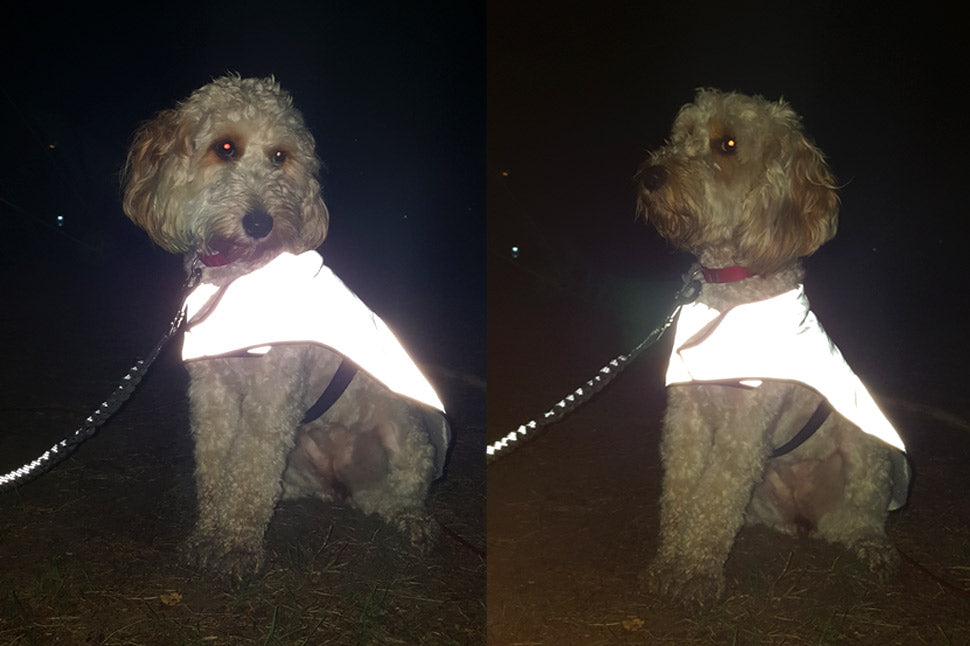 Crumble sporting the REFLECT360 dog jacket in medium
Crumble sporting the REFLECT360 dog jacket in medium
Ant is new to running with family pup Crumble, a cheeky cream Cockerpoo: “I’d always wanted a dog that I could go running with” says Ant. “I originally wanted a larger, more active breed – working cocker, springer spaniel and had visions of us up and down mountains. But Crumble is a small-to-medium-sized dog who just adores running.”
For Ant, it’s part of the motivation to get out there after a day working. “Every time I put my running kit on she gets so excited. That helps motivate my weary bones.” It’s a good tactic to get her to expend some of her boundless energy, for which her breed is well-known. “Generally I use it when we may be leaving her for a while. She comes back tired and happy, and then sleeps.” Not training for anything in particular has helped ease the pair in. “We’re just going out for 25 minutes,” says Ant. “We run to the park and do a few laps, probably around 5k in total. We tend to go the same park, which is enclosed, so she can’t run off.”
To lead or not to lead?
“I generally run to the park with a normal lead and let her off when we get there. I’d recommend starting off with one, going somewhere familiar and perhaps avoid busy places. We’ve run in Bushy Park, in the London Borough of Richmond, which is lovely, but you can get anxious because of having a dog around the deer.”
Running with a Puppy: Elliot & Bismarck
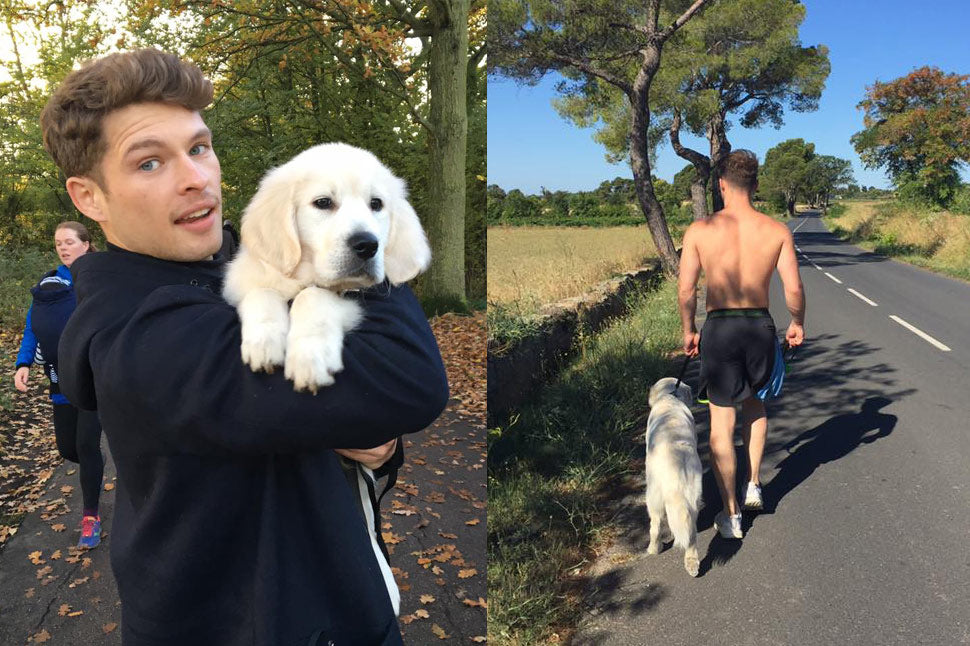
If you’ve got a puppy or a young dog, you can’t just dive straight in. Before you start, it’s a good idea to consult your vet, though generally you’ll be advised to wait until they reach six months old. Larger breeds may need a little longer. This is certainly true for Bismarck. Named after the German chancellor, Bismarck was the largest out of a litter of 16 golden retrievers, eight of which were raised by a Hungarian Vizsla mother whose puppies didn’t make it. Now that Bismarck is nearly a year old, owner Elliot discusses what it’s like starting out.
“I initially went to the vet and they gave me guidelines to follow, starting off with five minutes of exercise a day, and then another five added for every month of their age. It goes up proportionally until they’re about a year old, then you can really start taking them out as much as you want. For Golden Retrievers or Labradors, certainly don’t get them running until they’re about six months old.”
Dogs do a lot of growing in their first year, their cartilage and bones are still soft and contain extra blood vessels. This makes their malleable growth plates prone to injury or even bone deformities later in life. Elliot says: “Only run in straight lines to start with, and avoid doing sharp, hairpin turns or winding paths as it’s really not good for their developing elbows and joints. Running down the canal has proved advantageous for us; the dog has to follow you and stay close, and it’s all straight. Running in a straight line will strengthen their legs through running, but doing sharp turns when they’re growing can cause injury.”
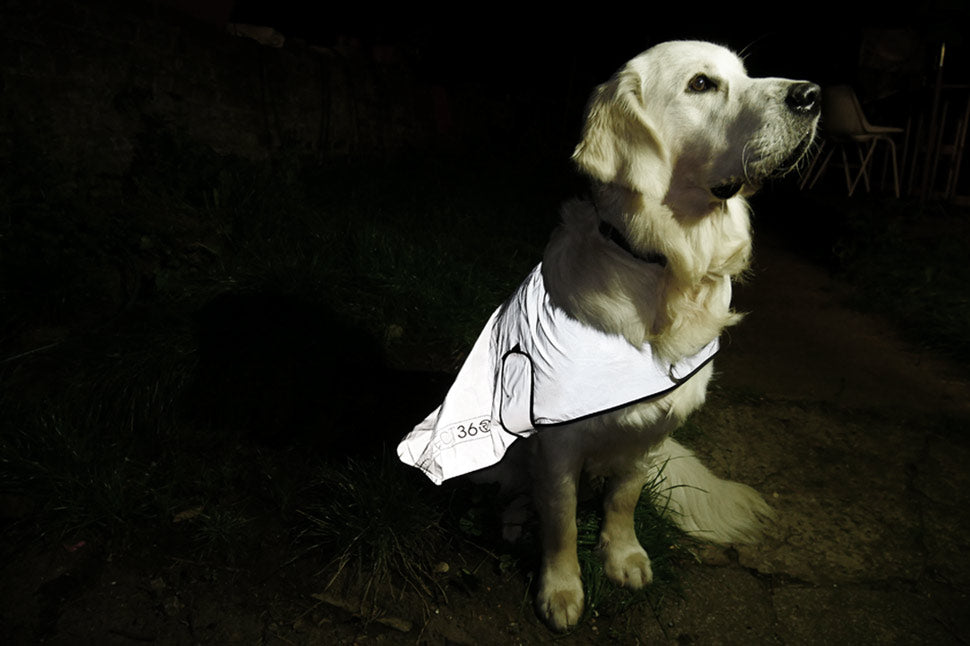
Is it tough training a puppy? “Yes,” says Elliot, “even with a generally obedient breed like a Golden Retriever, they still get over-excited. I like going to large parks where there aren’t any distractions, fewer dogs, it’s away from roads. And I always run in front of him, checking behind me so that he’s able to catch up, but also so that he knows that I’m watching him. Failing that, distract them with claps, snaps or treats when other dogs or distractions are around and chaos inevitably ensues.”
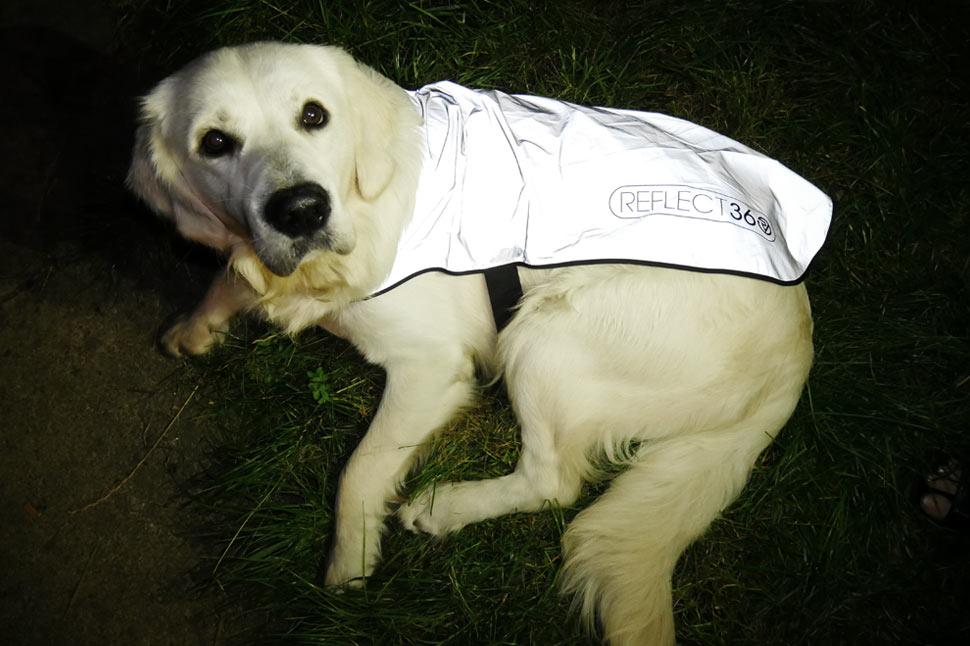
Quick Tips for Running with Your Dog at Night:
- Stick to a route you know well as there will be less risk of bumping into objects or getting lost.
- Make sure you and your pooch are as visible as you can be; get some reflective gear for you and your pup. You can even attach illuminated strips to his/her lead.
- Keep alert around cars and at crossroads if you’re running in an urban area.
- If there’s no pavement, always run against traffic.
- In the countryside, take a torch or headlamp with you.
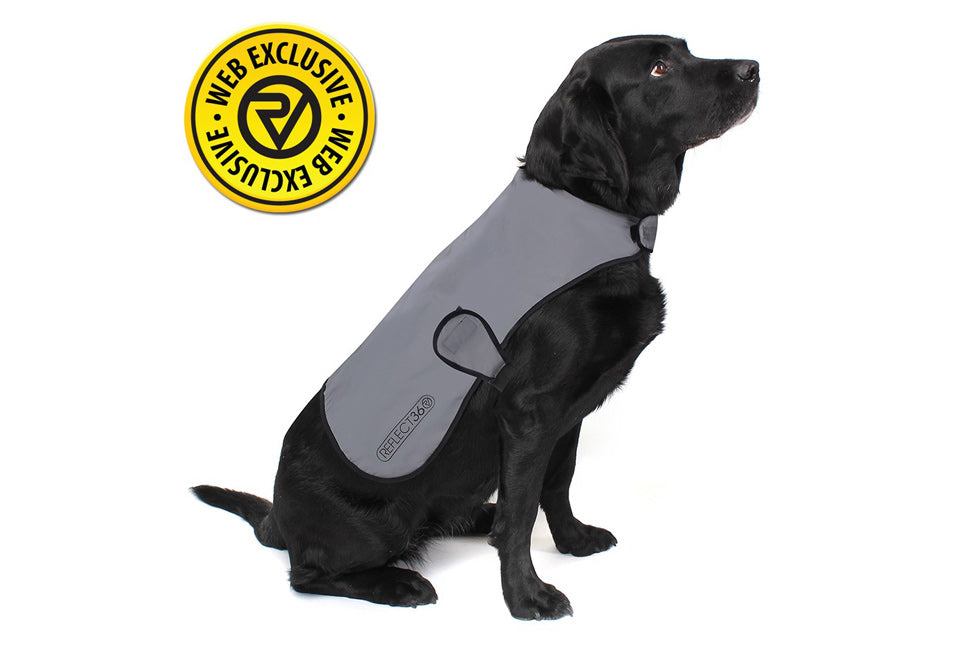 You can get your very own web exclusive REFLECT360 dog jacket in sizes to accommodate a chihuahua, a St Bernard and everything in between.
You can get your very own web exclusive REFLECT360 dog jacket in sizes to accommodate a chihuahua, a St Bernard and everything in between.




 British designed
British designed
